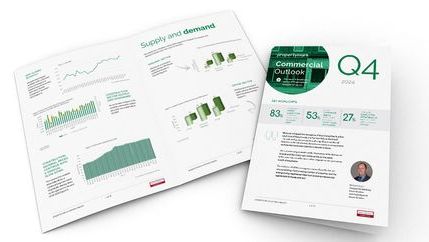
Propertymark has consistently advocated for clearer guidance and support for landlords to meet these targets. In discussions with UK Government officials, we have emphasised the need for realistic timelines and financial assistance to facilitate necessary upgrades.
Additionally, proposed reforms to the EPC framework aim to introduce new metrics assessing fabric efficiency, heating systems, and smart readiness. For non-domestic buildings carbon emissions are likely to remain the primary headline metric. Additional proposals include:
- Shortening validity periods for Display Energy Certificates (DECs).
- Enhancing data transparency and management by making EPC data more accessible and reliable.
- Strengthening compliance measures, such as increasing penalties for violations and simplifying Air Conditioning Inspection Reports (ACIRs).
Progress has slowed
The MEES regulations, introduced in April 2023, mandate that all rented commercial properties achieve an Energy Performance Certificate (EPC) rating of at least E. However, over 13,000 commercial rental properties still hold EPC ratings of F or G, rendering them non-compliant and unlettable under current laws.
The pace of upgrades has slowed, with a 20% year-on-year decline in properties achieving higher EPC ratings (A*-B) in 2024. Offices are particularly affected, with nearly 5,761 buildings still rated F or G, accounting for almost 5% of the total stock.
The UK Government plans to raise the minimum EPC rating for commercial properties to C by 2028 and B by 2030, impacting around 1.8 million non-domestic properties. Failure to meet these standards could result in significant fines and reputational damage for landlords.
Making UK property energy efficient
Financial implications, practicality, consequences, and communication surrounding energy efficiency measures are key concerns cited in Propertymark’s latest report which provides recommendations to help homeowners, landlords, and tenants save money, create new jobs and fight climate change.
Commercial landlords have a key role in net zero
Buildings in the commercial and public sectors account for around a third of the total energy consumed by non-domestic property (i.e. excluding industrial, agricultural or transport), and premises of 1,000 square meters or larger represent only 10% of commercial and industrial buildings but emit over half of all the carbon from building stock.
We urge our members to proactively assess their property portfolios, plan for necessary improvements, and stay informed about regulatory changes to ensure compliance and maintain market competitiveness. Not only will this reduce the fuel bills for tenants and contribute towards the UK Government’s net zero goal, but it will put landlords in a better position to meet potential future targets.
Energy efficiency
The UK housing stock is amongst the least energy efficient in Europe and the Committee on Climate Change says that energy use in homes accounts for about 14 per cent of UK greenhouse gas emissions. Non-domestic buildings account for around one-third of UK emissions from the building stock.








